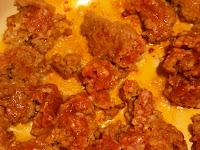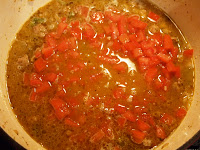It's really too bad that so much crumby stuff is a lot of fun sometimes. --J.D. Salinger, The Catcher in the Rye
The Ginger in the Rye is a high alcohol (~7%) beer that Joe Short came up with in 2007. It's important to note that this beer is not being marketed as a ginger beer, making it fundamentally different than Schmohz's Zingiberene or Left Hand's Good Juju. Ginger in the Rye is an experimental ale brewed with rye and Munich malt but fermented with the Weihenstephan yeast strain, giving it elements of a German wheat beer. Indeed, Beer Advocate refers to this beer as a hefeweizen, although I find that label inaccurate as well.
Ginger in the Rye pours a deep golden color with a shy, white head that dissipates quickly. A few lonely bubbles make their way lazily to the surface. The beer has the aroma expected in a ginger beer: the zing of fresh ginger is foremost in the smell, mixing with a pepper spice that comes from the copious amount of rye.
The smell, however, belies the complexity of this beer. Upon tasting, the first thing I noticed was the mouthfeel; this is a smooth, thick, almost viscous feeling beer that lubricates the mouth and throat without being cloying. It contrasts sharply with the spicy ginger and pepper that accompany the flavor. There is a slight citrus quality that, until acclimating myself to the beer, came across as slightly astringent. Clove flavors dance with the ginger and pepper, and the faint taste of banana – likely from the yeast used – haunt the palate, reminding you that this is not a traditional ginger beer. Citrus and honey again appear upon the exhale. This is a complex beer.
If you don't like ginger, don't drink this beer. If you love ginger beer, don't expect this beer to be traditional by any means. And if you think the quote I picked at the beginning of this post was a poor choice, then you're a phony, for cryin' out loud.
The Ginger in the Rye is a high alcohol (~7%) beer that Joe Short came up with in 2007. It's important to note that this beer is not being marketed as a ginger beer, making it fundamentally different than Schmohz's Zingiberene or Left Hand's Good Juju. Ginger in the Rye is an experimental ale brewed with rye and Munich malt but fermented with the Weihenstephan yeast strain, giving it elements of a German wheat beer. Indeed, Beer Advocate refers to this beer as a hefeweizen, although I find that label inaccurate as well.
Ginger in the Rye pours a deep golden color with a shy, white head that dissipates quickly. A few lonely bubbles make their way lazily to the surface. The beer has the aroma expected in a ginger beer: the zing of fresh ginger is foremost in the smell, mixing with a pepper spice that comes from the copious amount of rye.
The smell, however, belies the complexity of this beer. Upon tasting, the first thing I noticed was the mouthfeel; this is a smooth, thick, almost viscous feeling beer that lubricates the mouth and throat without being cloying. It contrasts sharply with the spicy ginger and pepper that accompany the flavor. There is a slight citrus quality that, until acclimating myself to the beer, came across as slightly astringent. Clove flavors dance with the ginger and pepper, and the faint taste of banana – likely from the yeast used – haunt the palate, reminding you that this is not a traditional ginger beer. Citrus and honey again appear upon the exhale. This is a complex beer.
If you don't like ginger, don't drink this beer. If you love ginger beer, don't expect this beer to be traditional by any means. And if you think the quote I picked at the beginning of this post was a poor choice, then you're a phony, for cryin' out loud.





























































